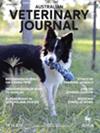Frequency of workplace incidents and injuries in veterinarians, veterinary nurses and veterinary students and measures to control these
Abstract
Background
Veterinarians, veterinary nurses and veterinary students work and train in a variety of environments and are exposed to a wide range of hazards.
Objectives
(1) To compare the rate of health and safety incidents and injuries between veterinarians, veterinary nurses and veterinary students. (2) To investigate the health and safety hazard controls present in Australian veterinary workplaces.
Study Design
A cross-sectional study, using an online questionnaire.
Methods
Anonymous links to the questionnaire were disseminated to Australian veterinarians, veterinary nurses and veterinary students.
Results
A total of 494 veterinarians, 484 veterinary nurses and 212 veterinary students completed the survey. Incidents and injuries were common, particularly sharps-related injuries and animal bites. Australian veterinary nurses and veterinarians experienced the studied incidents at similar rates to each other. Veterinary students experienced some incidents and injuries at rates higher than both veterinarians and veterinary nurses, including heatstroke, hypothermia, sunburn, electric shock, loss of consciousness, being rammed or pushed over by an animal and farm equipment injuries. Of the workplace hazard controls reported, first aid boxes were most commonly present, and safety meetings occurred least commonly. Veterinary nurses received Q fever and rabies vaccines much less frequently than veterinarians and veterinary students.
Conclusion
This study demonstrated that improvements need to be made to the occupational health and safety standards in the Australian veterinary sector. Veterinarians and veterinary nurses had suboptimal rates of access to many of the required and critical workplace health and safety controls. Improvements to the standard of health and safety training of veterinary students are indicated, given their higher rates of certain incidents and injury.

 求助内容:
求助内容: 应助结果提醒方式:
应助结果提醒方式:


